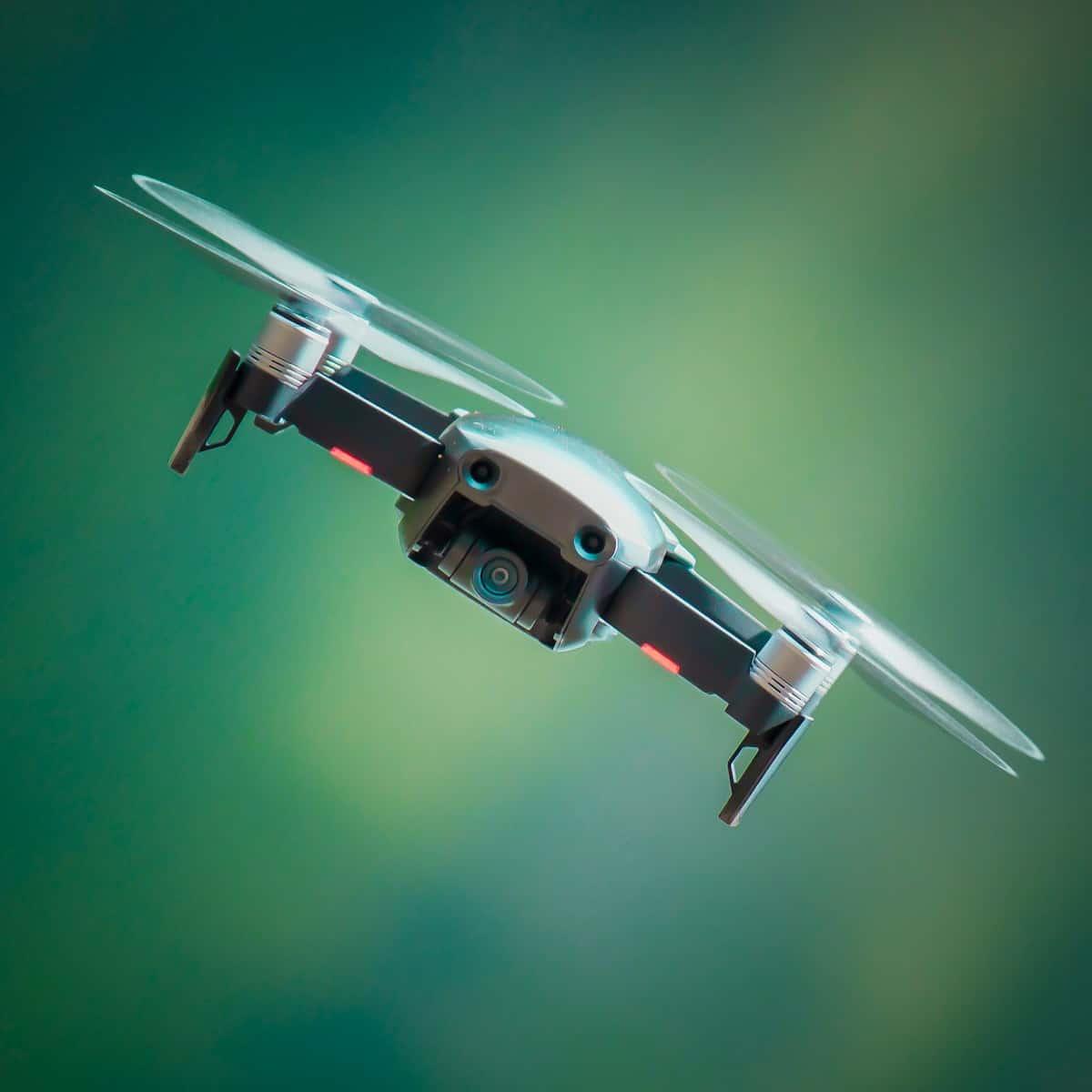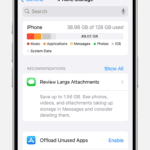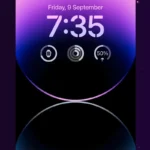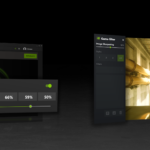Drone cameras are amazing but can sometimes run into problems. Before taking your drone to a repair shop, there are a few easy fixes you can often try yourself.
DIY Solutions for Drone Camera Malfunctions
Common Drone Camera Issues
Before we jump into the fixes, here are some of the most common problems you may encounter with your drone camera:
- Blurry or Out-of-Focus Images: May be caused by a dirty lens, improper settings, or gimbal problems.
- No Video Signal: Issues with the camera’s connection, gimbal, or even your wireless connection could be the culprit.
- Gimbal Errors: Shaky or stuttering video often indicates a gimbal malfunction.
- Physical Damage: Cracked lenses or broken camera components will require more serious repairs.
Troubleshooting Tips
Here are some easy things you can do to resolve these problems:
- Clean the Lens: Dust, fingerprints, or smudges can greatly affect image quality. Use a microfiber cloth and lens cleaner for this.
- Check Camera Settings: Ensure your camera is set to the appropriate resolution, frame rate, and focus mode for your desired results.
- Inspect the Gimbal: Check for any obstructions, dirt, or physical damage that might be affecting the gimbal’s movement. Gently recalibrate it if necessary.
- Secure All Connections: Make sure all cables connected to the camera and gimbal are tight and undamaged.
- Update Firmware: Check if there are any recent firmware updates available both for your drone and the controller.
When to Seek Professional Help
If the steps above don’t fix the issue, you might need more help. Here’s a breakdown of when to consider professional drone repair services:
| Issue | When to Seek Professional Help |
|---|---|
| Physical Damage (cracked lens, broken parts) | Always |
| Persistent gimbal malfunction | After basic troubleshooting |
| Complex internal camera issues | If you’re not comfortable with electronics |
Drone Camera System Overview
A drone’s camera system is fundamental for various applications such as aerial photography, FPV (First Person View) flying, and inspection roles. Typically mounted on a stabilizing gimbal, the camera captures smooth, clear images even during motion. The gimbal ensures the camera remains steady despite the drone’s movement, which is particularly essential in quadcopter models like the DJI Mavic, Phantom, and Inspire.
The heart of the system, the camera, can vary from consumer-level quality to professional-grade equipment. It is designed for easy integration with the drone’s flight control system, allowing pilots to get real-time visuals and capture images from unique aerial perspectives.
Unmanned Aerial Vehicles (UAVs), both recreational and commercial, come equipped with components that guarantee optimal camera functionality. These include:
- Lens: Clean with a soft cloth to avoid scratches that can blur images.
- Gimbal Calibration: Ensures smooth camera operation and quality footage.
- SD Card Management: Prevents storage errors that might interrupt recording.
To maintain performance, regular operation checks and adherence to the manufacturer’s guidelines are recommended. This approach helps to identify issues like a non-functional drone camera, which requires troubleshooting as per the UAV’s instruction manual.
In the world of UAVs, maintaining the camera system is not just about repairs when things go wrong. Effective maintenance also includes preventive steps such as regular calibrations, lens cleaning, and ensuring the gimbal’s firmware is up to date. By understanding these essentials, drone operators can enjoy the full potential of their UAV’s camera system for all their aerial photography and FPV needs.
Common Drone Issues
When it comes to maintaining and repairing drones, certain issues come up more often than others. Knowing how to identify and fix these common problems can help keep your drone in prime flying condition.
Crash Assessment
After a crash, it’s crucial to perform a thorough assessment. Look for visible damage to drone parts like the body and propellers. Check for loose components, and ensure the battery hasn’t been compromised. A careful diagnostic can prevent further damage due to overlooked issues.
Gimbal and Camera Damage
If your drone’s footage is shaky or the camera won’t stabilize, the gimbal may be at fault. Check for physical damage or debris that could hinder its movement. Sometimes recalibrating the gimbal in the drone’s settings can fix the issue.
Propeller and Motor Damage
Damaged propellers can significantly affect flight stability. Inspect each propeller for cracks, chips, or bends. Motors, too, can suffer from wear or impact-related damage. Listen for unusual sounds which might indicate motor issues.
- Propellers: Look for cracks, bends, and chips.
- Motors: Pay attention to sounds and performance.
Battery Related Problems
A faulty battery could mean reduced flight times or even power failures mid-flight. Ensure the batteries are properly charged and stored. If the battery doesn’t hold a charge, it may need replacing.
- Charging: Verify the battery charges to full capacity.
- Storage: Keep in a cool, dry place to prevent degradation.
Firmware and Communication Errors
Firmware updates are vital for smooth operation but can sometimes introduce glitches. If you’re having communication errors between the controller and the drone, or unexpected behavior, consider updating or reinstalling firmware. Always follow the manufacturer’s guidelines when handling firmware to avoid user error.
- Updates: Regularly update to the latest firmware.
- Troubleshooting: Reinstall firmware if persistent issues occur.
Repair Procedures
When repairing drone cameras, the right approach can make all the difference. Knowing the steps to diagnose, replace, calibrate, and test is crucial for a successful repair.
Initial Diagnostic Steps
Before diving into repairs, it’s crucial to identify the issue with the camera. Start by examining the gimbal for any visible damage, ensuring that all cables are connected properly, and checking if there are any error messages on the drone’s interface.
Parts Replacement
Gimbals and cameras undergo wear and tear; thus, it might be necessary to replace damaged or malfunctioning parts. Always use manufacturer-recommended parts for consistency and reliability. Document the make and model of your drone to ensure you order the correct components.
Gimbal Calibration
After replacing any parts, calibrate the gimbal to ensure it moves smoothly. This involves accessing the drone’s software and following the calibration procedure, which typically includes setting the gimbal’s range of motion and balancing.
Camera Functionality Check
It’s essential to verify the camera’s performance before declaring the repair complete. Test autofocus, clarity, and responsiveness to controls. Ensure the live feed displays correctly and that there are no glitches or delays in the video.
Final Test Flight
The last step is a test flight. This not only confirms that the camera functions as expected while in the air but also checks the gimbal stability and the overall impact of the repairs on the drone’s flight capabilities. Monitor the live feed for any signs of issues during the flight.
DJI Drone Specifics
DJI drones are renowned for their cutting-edge technology and high-quality imaging capabilities. However, to maintain their top performance and resolve any issues, DJI offers a range of support and service plans for their customers. Here’s what you need to know about DJI drone camera repairs and maintenance.
DJI Care Refresh
DJI Care Refresh is a comprehensive service plan that provides peace of mind to drone enthusiasts. If your drone is damaged, DJI Care Refresh offers up to two replacement units for a small additional charge. Subscribing to this plan also prioritizes your repair requests, ensuring quick turnaround.
DJI Customer Support
For any issues or inquiries, customers can reach out to DJI Customer Support. The support team assists with service requests, repair status updates, and general queries. You can contact DJI Customer Support by email or through their online service portal.
DJI Mavic Repair
Owners of the DJI Mavic series can rely on DJI’s efficient repair services if their drone is in need of a fix. Repair costs can vary depending on the drone’s condition, but DJI’s official repair centers strive for a quick and systematic repair process.
DJI Phantom Maintenance
DJI Phantom drones require regular maintenance to perform at their best. DJI recommends routine checkups and timely updates. In case of damage, the DJI service centers are equipped to handle all sorts of repairs, ensuring your Phantom is back in the air quickly.
DJI Inspire Updates
Keeping your DJI Inspire drone up to date is crucial for optimal performance. Regular firmware updates are released to improve functionality and safety. If technical assistance is needed for updates or repairs, DJI’s customer service is there to support.
Cost and Logistics of Repair
When your drone camera is on the fritz, the repair process might feel overwhelming. Understanding the costs involved and how the repair process works can clear up confusion and help ensure you get your drone back to the skies efficiently.
Assessing Repair Costs
Repair costs can vary significantly based on the drone’s make and model. Generally, you’re looking at several factors that influence the final bill:
- Labor: Expertise doesn’t come cheap, and skilled technicians command a premium.
- Parts: Expect a broad range of prices, from a few dollars for minor components to hundreds for major parts.
To give you a better idea:
- Minor repairs: $20-$100
- Major repairs: $100-$500+
Remember, warranty might cover some costs, so check your documents.
Sourcing Quality Parts
Picking the right parts for your drone is crucial. For the best results, stick with certified parts—they might be pricier, but they’ll save you money in the long run by keeping your drone in the air longer. Here’s a quick guide to help you understand what to look for:
- OEM Parts: Original Equipment Manufacturer parts come directly from the drone’s maker—top quality, but often more expensive.
- Aftermarket Parts: These can be cheaper but vary in quality. Make sure they have good reviews from other drone owners.
Customer Service Experience
A seamless repair experience hinges on good customer service. Top-notch repair shops offer clear communication and reliable updates. Here’s what to expect from a reputable service:
- Transparency: Clear information about repair timelines and costs.
- Availability: Easy ways to reach the service for updates or questions.
They’ll usually have a strong reputation backed by positive customer reviews, which indicate their level of experience and reliability. Keep an eye out for services that provide a quick turnaround, as that’s often a good sign of efficiency and expertise.
Maintenance and Prevention
Keeping your drone camera in top shape involves a series of regular actions designed to prevent problems before they occur. By adhering to maintenance routines and timely updates, you safeguard your investment and ensure your drone stays ready for flight.
Routine Inspection and Maintenance
Inspection: Make it a habit to check your drone camera before and after each use. Look for loose components, damaged parts, and any debris that might have collected. Pay special attention to the camera lens; ensure it’s free of smudges and scratches for the clearest images.
- Maintenance Tips:
- Clean the camera lens gently with a microfiber cloth.
- Check screws and make sure they’re tight.
Updating Firmware and Software
Updates are crucial for maintaining peak performance and unlocking new features.
- Software Management:
- Regularly check for firmware updates from the manufacturer.
- Install updates as soon as they are available.
Battery Care and Storage
Battery: Treat your drone’s power source with care. Storage and maintenance of the battery affect the drone’s longevity and safety.
- Best Practices:
- Store batteries in a cool, dry place at a partial charge.
- Avoid leaving them fully charged for extended periods.
Propeller and Screw Maintenance
Propellers and Screws: These components can directly impact your drone’s operation and stability.
- Checklist:
- Inspect propellers for any damage or wear.
- Ensure screws are secure but not overly tightened, as this can cause stress on the frame.
Legal and Safety Considerations
When it comes to drone camera repair, it’s critical to understand the rules that govern unmanned aerial vehicles (UAVs) and ensure your operations adhere to both legal and safety standards.
Regulations for UAVs
Drones, also known as UAVs, are subject to regulations that vary based on the country and sometimes even within different regions in a country. In the United States, the Federal Aviation Administration (FAA) sets the rules for drone operation. Those who repair drone cameras need to be aware of these regulations since any modification or repair can affect the drone’s flight characteristics and its compliance with rules. For example, repairs should not alter the drone’s weight and balance in a way that would violate FAA regulations.
- Weight: Prior to operation, make sure the UAV does not exceed the maximum takeoff weight.
- Flight Zones: Repairs should not impact the drone’s ability to stay within designated flight areas, avoiding restricted airspace.
- Identification: Drones require proper registration and identification; ensure these are intact and legible after repairs.
Remote Control Compliance
The remote control aspect of a UAV is essential for safe operation. Repairs on the drone’s camera or other components must also consider the remote control’s functionality:
- Frequency Bands: Repairs should respect the legal frequency bands for remote control operation to avoid interference with other wireless devices.
- Control Range: Ensuring that the effective range of the remote isn’t compromised by repairs is crucial for maintaining control of the UAV.
- Responsiveness: The drone must respond accurately to the remote’s commands, so repair work should not hinder the control linkage.
Adhering to safety and legal guidelines ensures that drones remain a benefit to their users and do not become hazards in the sky. Repair work is as much about keeping the drone compliant as it is about restoring functionality.
Advanced Repair Techniques
When tackling the intricacies of drone camera repair, having a clear understanding of advanced repair techniques is crucial. From addressing sophisticated electronic complications to performing specialized gimbal repairs, the following methods are essential for maintaining optimal functionality.
Addressing Complex Electronic Issues
In the world of drone camera repair, electronic challenges often require precise diagnostic procedures. Diagnosing these issues starts with examining the craft’s communication systems between the camera, gimbal, and remote control. If the drone’s camera isn’t responding to commands or providing feedback, it’s essential to use a systematic approach:
- Check wiring connections for possible detaches or damage.
- Use a multimeter to test the continuity of the circuits.
- Update firmware to ensure all components are running the latest software.
Soldering may be required if connections have come loose or if components need replacing. Always disconnect the craft’s power source before attempting repairs to avoid further damage.
Specialized Gimbal Repairs
The gimbal is a pivotal component that stabilizes the drone’s camera, ensuring sharp and steady images. Here’s how one can address gimbal-related issues:
- Calibration: Regularly calibrate the gimbal using the drone’s software, as this corrects subtle errors that accumulate over time.
- Balance: Verify the camera is balanced accurately on the gimbal. An imbalanced camera can lead to abnormal motions and excessive wear.
- Mechanical Blockages: Inspect for and remove any debris that could obstruct the gimbal’s articulation.
If the gimbal motors show reduced performance or irregular movements, it may indicate a need for replacement. Procuring genuine parts for replacement will result in a more reliable repair.
Drone Repair Services
When your drone encounters technical difficulties or physical damage, finding top-notch repair services is crucial. This ensures your device is back in the air safely and swiftly.
Choosing a Reliable Repair Service
The best drone repair services will be experienced, especially with top brands like DJI. Look for technicians trained by industry leaders—those knowledgeable about the latest firmware and hardware advancements. Ensure the service you choose has a proven track record of fixing various issues, from physical crashes to software glitches.
Understanding Service Warranties
A trustworthy repair service will stand by the quality of their work. DJI Care is a comprehensive protection plan for DJI products, and many reputable repair services are compatible with these warranty terms. When selecting a service, investigate whether it provides any guarantees or is recognized by warranty providers like DJI Care Refresh, ensuring you benefit from the warranty you paid for.
Evaluating Service Reputation
Customer reviews can be a treasure trove of information, reflecting the satisfaction levels of previous clientele. A service’s reputation often hinges on the effectiveness of their customer support, how prompt they are with email communications, and the quality of the repairs. Look for those who receive high praise for customer interactions and the overall reliability of their service.
Frequently Asked Questions
When it comes to drone camera malfunctions, it’s essential to understand the repair processes, costs, and troubleshooting methods. Here are some common questions and clear answers to help maintain your drone’s camera.
What are the typical repair procedures for a damaged drone camera?
If a drone camera is damaged, the typical repair procedures involve a thorough inspection to identify the issue. This may include checking for gimbal vibration, scrutinizing the propellers for damage, and making sure the camera’s hardware connections are secure.
How much can I expect to pay for professional drone camera repairs?
The cost of professional drone camera repairs can vary widely, starting at around $130 and increasing based on the extent of the damage. Additional costs may apply if specific parts of the camera system, like the gimbal, need to be replaced.
Where can I find authorized service centers for DJI drone repairs?
Authorized service centers for DJI drone repairs can be located through the DJI’s official website. These centers can address various issues and ensure that repairs meet the company’s standards.
What should I do if my drone camera is not functioning properly?
If your drone camera isn’t working as expected, start by performing basic troubleshooting: check for firmware updates, ensure the camera is properly connected, and examine the lens for any obstructions. If these initial steps don’t fix the problem, consider seeking professional help.
Is it possible to repair a drone camera myself, and what tools would I need?
Repairing a drone camera yourself is possible if you have the right tools and expertise. Essential tools include a screwdriver set, gimbal calibration equipment, and sometimes, specialized drone repair kits available online or at electronics stores.
How do I troubleshoot a drone that won’t fly after a crash?
Troubleshooting a drone that won’t fly following a crash involves inspecting for physical damage, checking motor function, and ensuring the battery is correctly installed and charged. Additionally, recalibrating the drone’s sensors and flight systems may help address the issue.







